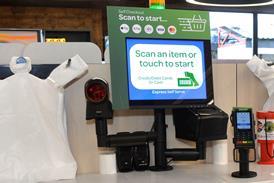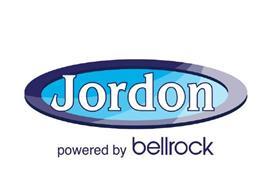With fuel margins as tight as ever, retailers are looking to other means of generating revenue – and that is often through developing the forecourt shop into a fully-fledged convenience store. But forecourt shops have traditionally been nothing more than a small kiosk so if space allows, a knockdown rebuild has been the answer.
But a site redevelopment seems like a daunting business – a lengthy planning process; the site turned into a building site for perhaps months; not to mention the loss of trade for the duration of the work – so there’s nothing like learning from the experiences of those who have ‘been there, done that’.
To give retailers a taste of what to expect from investing in a knockdown rebuild, Cambridgeshire-based independent James Graven & Son, reveals has shared its diary of the £700,000 site redevelopment at its West Park Street Esso forecourt in Chatteris, which saw the small kiosk transformed into a 1,500sq ft convenience store under the Budgens fascia. The new shop includes a comprehensive hot food offer, which owners Jonathan and Rebecca James say is already becoming a destination in itself.
The Jameses initially applied for planning for the redevelopment in February 2001. And this is where they met their first obstacle. “The local newspapers covered the story positively at first but a local reporter then interviewed other town convenience retailers for their views – all of whom were up in arms,” reveals Jonathan.
‘I want to jump out of a window’ was the headline of the local paper in Chatteris the following week, quoting the trader opposite the James’s site. “However, quotes from potential customers proved very positive with most saying they couldn’t wait for our site to open,” adds Jonathan.
With the site closed for 15 weeks, staffing also became a big issue for the Jameses, especially as two members of staff had been working at the site for 35 years each. But by moving the West Park Street staff to the company’s nearby Slade End site, it kept the customers in touch with the development. “The entire fuel volume moved from West Park Street to Slade End and then moved back when we opened up again,” says Jonathan. “We also gained 50% volume from those who came in from elsewhere, while shop sales were up by 450% after just two months.”
The project involved a plethora of contractors. The shopfitters were AJ Secker & Sons; building work was done by Broham Forecourt Developments, and ACT Design were the architects. The development included new tills, back office and accounting suite from Torex Retail; Veeder-Root tank gauges; Tokheim pumps; and Flexiline Forecourt Services installed the pumps, tanks and pipework.
WEEK ONE
During the first week the site was set up, including fencing for security, removal of fuel and making tanks safe. Asbestos materials were removed from the main building, the shop and canopy was demolished, as was the forecourt, to expose underground fuel tanks. But an additional two tanks not plotted on the survey were found, adding to the workload.
At this stage, when the forecourt was clearly a building site, some customers proved they would go to any lengths to continuing shopping their regular store. “The site was closed but customers were still trying to get through the Herras fencing to get to the already derelict site,” says Jonathan. “One lady on a bicycle weaved in and out of diggers and dumpers and asked the site foreman for half a dozen eggs.”
WEEK THREE
By the end of week three, the contractors had completed breaking up the forecourt, crushing concrete, removing underground storage tanks and back-filling excavation in readiness for the tank dig. They also carried out soil tests to all the exposed forecourt areas.
WEEK FIVE
Things started to take shape in week five when new underground storage tanks were installed and surrounded in shingle, and work began on the shop footings. Week six included erection of canopy legs and building steel work, and commencement of ducts and drainage around the building, as well as the installation of tank manhole chambers and the start of the petroleum pipework installation. One day was lost in week seven due to a national bank holiday.
WEEK EIGHT
With two electricians on site in week eight, contractors began the site’s electrical installation. The shop roof was made weather tight, and the shop floor was screeded. From week 10 the site was starting to look like a service station again with the forecourt being concreted and the shop tiled. By week 11, fascia boards were being added, kerbing was completed and plumbing installations began.
WEEK TWELVE
By week 12 it was time for the installation of the shopfront, dry lining and partitioning to the building, ducts and drainage, and the start of shopfitting. Come week 13, 30% of the shopfitting was complete, the canopy was installed including underlining and lighting, CCTV and alarms were fitted, and pipework was prepared for pump installation in week 14.
In the final week, all shopfitting and forecourt works were completed by the Wednesday, leaving the rest of the week to complete clean-up of the site in readiness for commissioning of forecourt and shop equipment.
The Jameses are delighted with the end result and say that the £700,000 investment will pay for itself. “Our new site has also been quite inspirational to some dealers – especially those who were thinking of selling their site for alternative use,” says Jonathan. “We’ve shown that with the right shop offer you can turn a site that might have been sold into a successful shop that happens to sell fuel.”























No comments yet